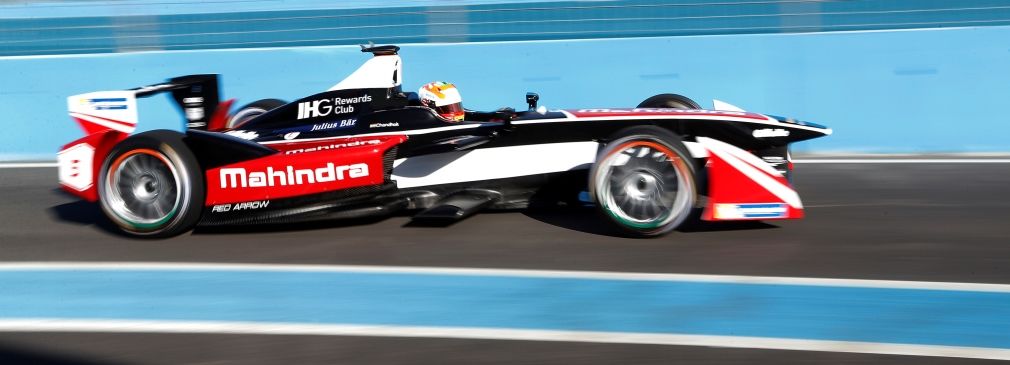Formula racing has always been a spectacle –champagne, exotic locations, and fast cars have ensured that it has a huge global following. But apart from the spectacle, it was also the place where manufacturers would be able to show off new technologies and breakthroughs on the world stage, and demonstrate their efficacy to win championships.
Today, electric cars are becoming more and more commonplace on our roads, and as they grow in popularity we’re seeing more and more focus on their technology. Formula 1 racing has often been a proving ground for technological innovations that filter through to everyday vehicles, and a new racing series, Formula E (for Electric) aims to achieve the same interest and technological breakthroughs as F1, but for the electric car rather than the internal combustion engine.
Similar to F1, Formula E is a single-seater championship, however the cars are fully electric. While they don’t have the same power levels or top speeds as Formula 1, the races are still captivating.
Formula E has already had a full season of racing in its inaugural season last year, with races in 10 major cities around the world. The championship has 10 teams with 2 drivers, and the temporary circuits are set up in city-centres around the world.
Some of the teams involved are backed by major manufacturers, including Renault and Mahindra, and next year’s championship is expected to also include the likes of Jaguar - at a time when Tata-owned Jaguar is looking to introduce its own range of electric vehicles for sale.
While last year’s championship was a closed one – every team was using the same car, developed by Spark Racing – this year’s championship will be more interesting as it becomes an open championship. The rules of the competition now allow manufacturers to utilise their own powertrain developments to compete against each other. Teams won’t be able to fully develop their own cars yet, as their scope is limited to the electric motor, the inverter, the gearbox and the cooling system. This was done to prevent cost blowouts on aerodynamic developments and focus on the most important part of the cars for improvement and competition.
In the future, teams will be allowed to focus on battery development as well. Currently, the cars are unable to run for the full length of the race, so each team is allowed to use two cars per race – Formula E is hoping that by the 2018/19 season, battery developments will allow the cars to complete the race without a changeover.
The cars themselves have limits on them that are designed to make the races more interesting for spectators. The engines are limited to 200kw (270bhp), and full power is only available in practice and qualifying sessions.
When racing, the cars are limited to 150kw in their power-saving mode, but they can access a FanBoost to temporarily increase power to 180kw for a maximum of 5 seconds – this makes for interesting racing and adds a strategic component to the racing that keeps spectators on their toes.
The drivers for Formula E include some well-known names in the racing world – Bruno Senna, Ayrton Senna’s nephew, and Nick Heidfeld both raced in F1 previously and now race for Mahindra’s Formula E team. Former F1 world champion Jacques Villeneuve drives for Venturi Grand Prix, while long time F1 driver Jarno Trulli competed for his own team, Trulli GP, last year. Mahindra's team is backed by the IHG Rewards Club.
As the championship progresses, it’s expected that teams will be allowed to develop more and more of their own components, with regulations added similar to F1 to ensure that the racing remains interesting.
This year’s Formula E championship is already underway, and will conclude on 3rd July, 2016.



